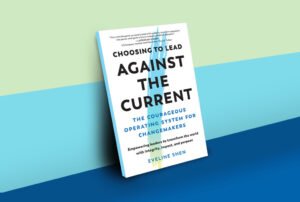
April 16, 2018; KYForward.com
Yesterday, the Nonprofit Research Collaborative announced that 75 percent of around 1,200 charitable nonprofits surveyed in the United States and Canada say they met their fundraising goals for 2017. While that may not be much of a surprise, given that many predicted there might be a rush to give before the new tax law took effect, more than half (61 percent) of the same group expect that they will have another good year in 2018, with 10 percent expecting the new tax law to actually increase fundraised revenue. Of course, fundraisers are a hopeful bunch, as the graph on page 11 of the report indicates.
The study also found that 63 percent of the nonprofits who responded raised more than in the prior year—the highest percentage rate increase since 2010 when the NRC began measuring these results. In 2016, 58 percent raised more than in 2015.
[clickToTweet tweet=”The NRC survey found no real difference between the fundraising success rates of small and large organizations.” quote=”One very interesting finding was that, according to the survey, there was really no difference between the fundraising success rates of small and large organizations. ” theme=”style3″]
One very interesting finding was that, according to the survey, there was really no difference between the fundraising success rates of small and large organizations. This new wrinkle has been true for the last two years; in the past, larger organizations were more likely than small ones to see increases. In fact, 65 percent of organizations with revenues of less than $250,000 showed increases, and this was second only to the percentage of organizations in the $10 million-to-$49.999 million category, at 67 percent.
Colleges and universities were the most likely to meet their goals, with 85 percent succeeding in raising the amount they planned. And surprisingly, considering all the press about the waves of donations received by some progressive nonprofits and donor-advised funds, the “public society benefit” subsector, which includes both types along with United Ways, saw only 62 percent of their organizations reach their target.
Eva Aldrich, Ph.D., president and CEO of CFRE International, the certified fundraising executive trade association, comments, “This wave of the NRC finds growth in major gifts receipts at 65 percent of responding organizations, plus continued success with appeals for smaller gifts through direct mail, online campaigns, and cash donations such as in an offering plate.”
Sign up for our free newsletters
Subscribe to NPQ's newsletters to have our top stories delivered directly to your inbox.
By signing up, you agree to our privacy policy and terms of use, and to receive messages from NPQ and our partners.
The press release on the report says,
In both countries, staffing and leadership for fundraising was mentioned by 24 percent of those who commented about what would most affect their results for 2018. The economy was the next most frequent, with 17 percent of respondents mentioning some aspect of global, national or local economic factors, including the U.S. stock market. About one in eight (13 percent) mentioned a specific type or element of fundraising, such as engaging individuals with the financial capacity to make a major gift or being more strategic about online communications or providing good reporting and accountability for all donors.
NRC is a joint project of the Association of Fundraising Professionals, Association of Fundraising Counsel, CFRE International, Giving USA Foundation, and the National Association of Charitable Gift Planners. Their samples are not scientifically generated, so we could write this study off as less than completely inclusive, but other reports appear to support this view of our current state.
Larry Lieberman, chief operating officer of Charity Navigator, says that the watchdog’s traffic is up, as is the average dollar value of donations made through their site.
“It’s absolutely an affirmation that generosity, compassion, and philanthropy are not driven by tax refunds,” Lieberman said, while cautioning that we can predict little about the all-important end-of-year giving season.
But in the NAPA Valley Register, Dr. Patrick Rooney, executive Associate Dean for Academic Programs and Professor of Economics and Philanthropic Studies at IUPUI (Indiana University Purdue University Indianapolis), maintains that the tax law will have its effect, albeit possibly partially obscured by economic growth, which he says is always the main driver of levels of charitable giving. Rooney cautions that seeing the true effects of the tax law may take years. To support this, he points to the effects of a sweeping tax package in the mid-1980s, where after dire predictions of the effects of charity, some households and businesses at first gave more to charity than they would have normally, but that spike was short-lived.
So, perhaps it is better to see this period as a fluke or window and not create ongoing budgets based on sustainability.—Ruth McCambridge











